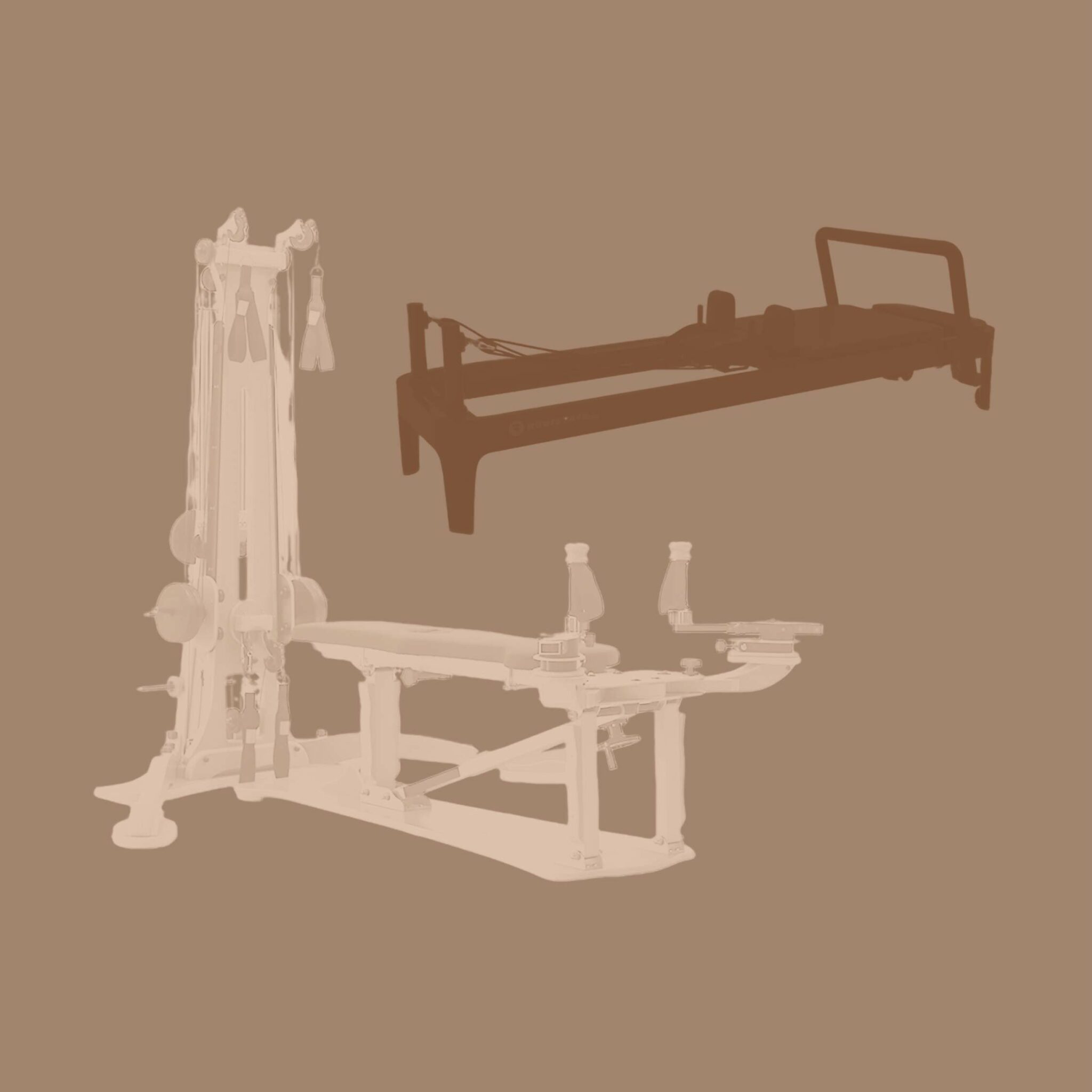Pilates has skyrocketed in popularity thanks to its effectiveness. People know and adore the practice for its slow, controlled exercises. These exercises improve core strength, posture, and balance.
Still, the lesser-known Gyrotonic method is slowly gaining popularity. This newer technique emphasizes fluid, circular movements. They mimic dancers to boost the body’s functional capacity.
Exploring these differences will help you understand these two methods. It will help you decide which aligns best with your fitness goals.
Key takeaways
- Gyrotonic and Pilates both improve strength and flexibility but use different methodologies.
- Pilates focuses on core stability and muscle balance. The Gyrotonic method emphasizes fluid, three-dimensional movements.
- Understanding the differences can help you decide which method you prefer.
Gyrotonics vs Pilates – Table of contents
Understanding Gyrotonic Expansion System
Gyrotonic focuses on using the whole body through rhythmic, flowing exercises. It’s designed to work with the natural curvature of the skeletal system.
Key principles of Gyrotonics include:
- Decompression of joints
- Use of three-dimensional movements
- Breathing
- Coordination
- Balance
Gyrotonic equipment
The Gyrotonic Expansion System uses a Gyrotonic Pulley Tower to perform the exercises.
This specialized equipment uses a pulley and weight system to create resistance. It also accommodates circular motions.
This allows you to activate a range of muscles to build strength and mobility.
Benefits of Gyrotonics
Gyrotonic exercise is about more than just physical strength.
It aims to ensure that each exercise adds to a balanced and fluid motion system. This can be beneficial for both the internal organs and acupuncture meridians.
It also helps to promote both mobility and strength. This way, your body can move better.
Benefits of Gyrotonic exercise:
- Strengthens the body
- Increases flexibility
- Expands your body’s range of motion
- Aids in injury prevention and physical therapy
- Stimulates the nervous system
- Improves balance and coordination
- Corrects muscular imbalances
Exploring Pilates
Joseph Pilates believed in creating connections between mind and body, achieving a harmonious fitness system.
Pilates exercises focus on whole-body connections as well as the core including:
- Abdominals
- Lower back
- Hips
- Glute muscles
These are all crucial for stability and strength. Pilates movement can also incorporate flexibility, alignment, and larger ranges of mobility.
Core principles and techniques
- Breathing: Coordinating breath with movement.
- Concentration: Focus on form and alignment in each exercise.
- Control: Movement is performed with muscular control to prevent injury.
- Precision: Small, precise movement.
- Centering: Movements originate from the core and engage muscles to support the spine.
- Flow: Exercises are executed with grace and fluidity.
Variety of Pilates equipment
You can do Pilates exercises with or without Pilates equipment. This makes it a versatile practice compared to other forms of exercise.
In different Pilates classes, you can find:
- Mat Work: This is the foundation of a Pilates practice. All you need is a mat and your body.
- Reformer: A reformer is a bed-like frame with a flat platform. It rolls back and forth and has springs for resistance.
- Cadillac: This apparatus includes bars, straps, springs, and levers. This facilitates a wide range of Pilates exercises.
- Wunda Chair: A small seat with pedals attached to springs. They transform the chair into an exercise apparatus.
- Ladder barrel: An arc-shaped piece of equipment. It assists in stretching and building strength in the entire body.
You can use specialized equipment to either challenge or assist your movement.
Benefits of Pilates
Pilates is a low-impact workout. It helps with many health goals and fits all fitness levels. These include better posture, core control, and even relief from back pain.
The beauty of Pilates is in its versatility.
Movements can be modified to make the practice accessible to everyone. Pilates can be practiced with or without equipment. Because of the resources available, it can even be conveniently practiced at home.
Benefits of Pilates exercise:
- Strengthens the core muscles
- Improves flexibility and posture
- Develops balance and coordination
- Boosts endurance and energy levels
- Injury prevention and recovery
- Enhances mind-body connection
- You can practice at home, in private sessions, or in group classes
- You can adjust exercises for your fitness level
- Corrects muscular imbalances
- You don’t need equipment to start
Key differences of both Pilates and Gyrotonic
Both Pilates and Gyrotonic work to build strength and develop a mind-body connection. But, their unique techniques cater to very different fitness preferences.
Philosophy
- Gyrotonics: Emphasizes fluid, three-dimensional movements. It champions core strength through circular and spiraling patterns.
- Pilates: Concentrates on core strength by promoting stability and precision in movement. Movement is linear and controlled.
Specialized equipment
- Gyrotonics: Utilizes the Gyrotonic Pulley Tower. A machine that incorporates weights and pulleys to guide movements.
- Pilates: Practiced with a mat or specialized equipment. Sessions can use equipment like the Reformer, Cadillac, and Wunda Chair. These machines provide resistance through springs rather than weights.
Movements
- Gyrotonics: Encourages rhythmic, flowing postures. Stretches engage the entire body with a focus on spinal and joint health.
- Pilates: Often more structured. Postures focus on body alignment and form through linear exercises.
Conclusion
Unlike other exercise philosophies, Pilates and Gyrotonics promote strength, flexibility, and mind-body awareness. All focuses benefit the nervous system and a balanced body.
Yet, both use different tools and approaches. When choosing between Pilates vs Gyrotonics movement, consider:
- Whether you would enjoy controlled or fluid movements.
- The availability of certified trainers and studios near you.
- If you would prefer to practice at a studio or from the convenience of your home.
- The equipment you would like to use or have access to.
- Which focus aligns with your personal goals.



